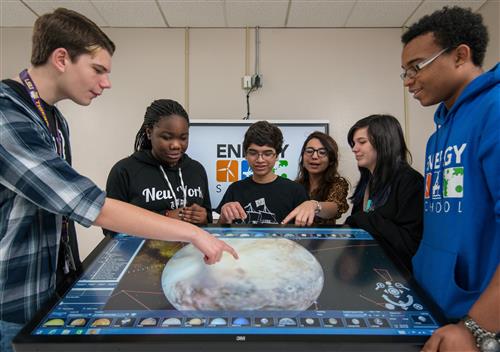- Houston Independent School District
- Private Nonprofit Schools
- Title IV, Part A
-
Title IV, Part A
 TITLE IV, PART A
TITLE IV, PART AThe purpose of the Title IV, Part A program is to improve students’ academic achievement by increasing the capacity of states, local education agencies, schools, and local communities to provide resources for student support and academic enrichment.
The grant focuses on:
- Well-rounded education opportunities
- Safe and healthy student activities
- Effective use of technology
PNP School Participation RequirementsTo improve student support and academic enrichment, private nonprofit schools are given the opportunity to participate in at least one of the three focus areas. With regard to the effective use of technology, the purchase of technology is not allowed.
To Generate the Campus Planning Allocation- The PNP school must be participating with HISD.
- At least one PNP school must be participating with the district in the Title I, Part A grant.
- All students enrolled at the campus in grades PK4-12 are counted in order to apply a per-pupil allocation.
- This process is completed annually.
To Receive Title IV, Part A Services
Title IV, Part A services are intended for the benefit of all students at PNP schools with Title I programs or non-Title I programs in the areas of student support and academic achievement.- Campuses must complete a Campus Needs Assessment and any eligible Title IV, Part A services must be aligned to it.
- All professional development, activities, and opportunities through the grant must have a proven record of success.
- Campuses must work in coordination with other schools and community programs.
Some eligible activities include:
-
- providing college and career guidance and counseling programs
- programming and activities to improve instruction and student engagement in STEM areas: science, technology, engineering, and mathematics, including computer science
- promoting the involvement of parents in the activity or program (support for safe and healthy students)
- fostering safe, healthy, supportive, and drug-free environments that support student academic achievement
- learning instructional practices for developing relationship-building skills
- mentoring and counseling to all students, including those at risk of failing, dropping out of school, delinquent activities, drug use and abuse
- using effective or innovative strategies for the delivery of rigorous academic courses through the use of technology
- providing professional development in the use of technology to enable teachers and instructional leaders to increase student achievement in the STEM areas, including computer science.
DOCUMENTS AND FORMS
-
Student Support and Academic Enrichment Participation Form
The Title IV, Part A Student Support and Academic Enrichment Participation Form provides data regarding student enrollment for funding purposes. Campus planning allocations are based on this student data. The funding will allow educational staff and other personnel to participate in eligible activities and opportunities that provide support and academic enrichment for students.PNP School Request for Approval of Field Lesson
Justification of Specific Expenditure: Educational Field Trip
Field Lesson Implementation Plan for PNP Schools
Parent Consent and Medical Release Form - PNP Schools

